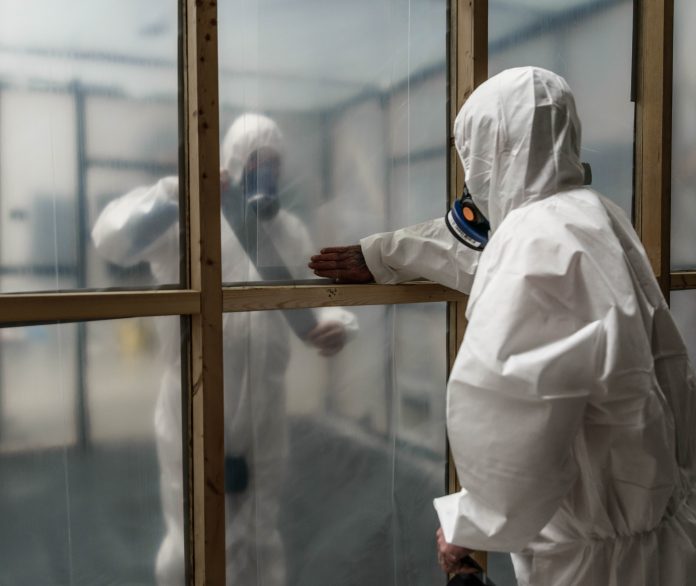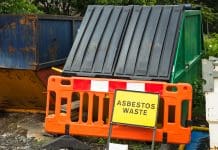It’s 20 years since exposure to asbestos was banned in Britain, yet companies are still putting workers at risk by failing to manage it, says Craig Foyle, immediate past president of the Institution of Occupational Safety & Health
I recently read about a court case involving a construction firm which, following a survey it commissioned, had identified a significant amount of asbestos on one of its sites.
Rather than wait for a specialist contractor to remove the asbestos, the firm went about doing so itself, without taking the necessary precautions to prevent its spread. This uncontrolled removal put at risk all those working on the site and anyone who visited it.
Sadly, this isn’t an isolated incident. Twenty years have now passed since asbestos was banned in Britain, but it remains a very big issue.
Estimates suggest that at least 500,000 buildings constructed before the ban contain asbestos. And cases such the one described above suggest there is a still much ignorance about how dangerous it is and how it should be properly managed.
That particular case was one of 31 involving either companies or individuals that have led to a prosecution since the start of last year. Fines ranged from £1 to £200,000, while some directors were given prison sentences.
That is just the tip of the iceberg. In the same period, 135 companies or individuals have been ordered to cease work because of non-compliance with asbestos regulations. A further 130 have been told they must improve.
It is clear, then, that the authorities come down very heavily on those who don’t manage asbestos properly – and rightly so.
The impact to companies, both financial and reputational, is severe and reflects the gravity of the offences. But this impact is far outweighed by the human cost of bad management of asbestos.
Every year in Britain alone, 5,000 people die from cancer caused by past exposure to asbestos at work. Exposure to asbestos does not cause illness overnight. In most cases, it takes at least 20 years for symptoms of cancers like mesothelioma to appear. So, it is likely that people who die this year were exposed before the ban.
But the fact that companies still haven’t got a grip on how to manage exposure suggests that people – and their loved ones – will continue to suffer from the effects in years to come.
Take Liam Bradley, for instance. The 32-year-old is in the unusual position of knowing he has mesothelioma just a few years after exposure to asbestos and before he is displaying any symptoms.
That is because the roofer had a fall from height, which punctured his lung. When surgeons operated, they found traces of mesothelioma.
Liam is a dad-of-one and he and his wife are expecting another baby. But his future is uncertain. He may not see his children grow up, start work, get married, have their own children. And all because he was exposed to asbestos while he was working as a roofer.
It is unacceptable that people and their families have to go through this.
An IOSH-funded survey last year found there was a worrying lack of awareness among tradespeople about asbestos. Of 500 respondents, including electricians, carpenters, joiners and roofers, nearly one in four said they had been exposed to asbestos, while one in three admitted to never checking the asbestos register before starting work on a new site – some of whom didn’t even know what an asbestos register is.
So, there will be many more Liam Bradleys out there. It is time for companies to wake up and realise how dangerous asbestos is. It lurks in roofing, spray coatings, lagging, insulating boards and cloth. Those who disturb it put themselves and others at risk. So, what can be done? We’re not going to be able to suddenly rid all of our buildings of asbestos, after all. Therefore, it is vital that it is managed properly.
IOSH’s No Time to Lose campaign, which has focused on asbestos for the past year, has a range of free resources. These include details on what asbestos is, where it can be found, what to do if it’s disturbed, and how companies should have a management plan. We will continue to raise awareness of this important issue, in collaboration with other professional bodies, companies and individuals.
IOSH was delighted to play a key part in the recent Global Asbestos Awareness Week (1-7 April). During the week, we held a webinar that provided further detailed information about the risks of asbestos and how it can be managed. And IOSH’s chief executive Bev Messinger gave a presentation at the 15th Asbestos International Asbestos Awareness & Prevention Conference in Washington DC.
This conference drew delegates from around the world, demonstrating how asbestos is a global issue. In Britain, workplace safety standards have improved significantly compared with decades ago, though we do still need to continue that trend as 144 people died in workplace accidents in 2017-18.
But we must also ensure that work does not affect people’s health. Everyone has the right to expect to return home from work every day without having their safety or health put at risk
And that includes not being exposed to asbestos. There are no excuses. We need to get it right.
Craig Foyle

Immediate Past President
Institution of Occupational Safety & Health
Tel: +44 (0)116 257 3100
Twitter: @IOSH_tweets
Facebook: IOSHofficial
LinkenIn: iosh
YouTube: IOSHchannel














